1. To begin, you will need a vector arrowhead shape. In this example we opened an Adobe® Illustrator® document in FreeHand (FreeHand has an import filter for Illustrator documents). You could also open a PDF file and import arrowheads in the same manner. You can copy and paste vector shapes from any document that you can open in FreeHand. You also can draw your own. 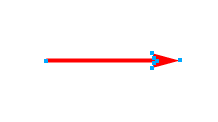 2. In this imported drawing the arrowhead is a separate object from the line.  3. By putting the document in Keyline view, you can see that the arrowhead is a separate closed path and is not part of the line. 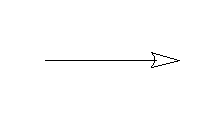 4. Using the Pointer tool, select just the arrowhead object and click Edit > Copy to copy it to the clipboard.  5. Draw a line using the Line tool. 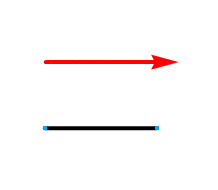 6. Bring up the Stroke tab on the Object Inspector. At the bottom are two arrowhead pulldowns. Click one of them (circled below left). In the menu, select "New" (below right). This will bring up the Arrowhead Editor.
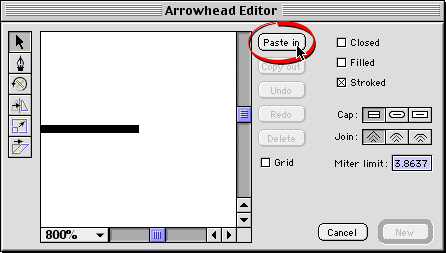 8. Then click "New". This adds the arrowhead to the list of predefined arrowheads and is now available to use on any line.  9. The new line, still selected will have the new arrowhead applied to it. 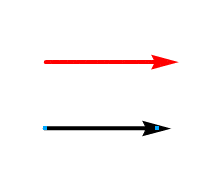 10. Just to illustrate what you can do with your new arrowhead, click the "Width" pulldown in the Object inspector to double the stroke from 4 to 8 points (below left). As you can see, the result will be that the arrowhead will double in size in direct proportion to the increase in stroke (below right). If the arrowhead was a separate object it would not scale up with the line.
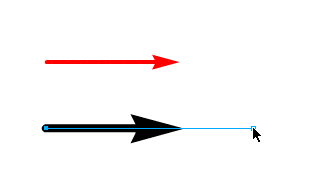 12. The arrowhead will move with the line. If the arrowhead was a separate object it would remain in the middle of the line and not on the end.  13. You can also drag the endpoint to any other position and the arrowhead will stay in the proper orientation to the line. You couldn't do this if the arrowhead was a separate object. 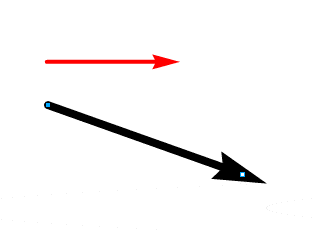 | ||||||
 10:51:00 AM
10:51:00 AM
 tutorial_mania
tutorial_mania
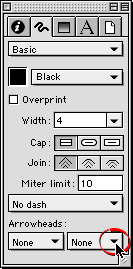
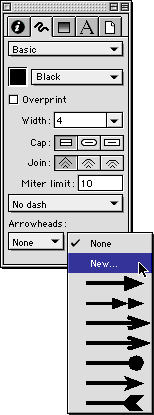
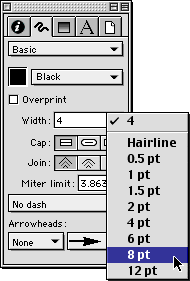

 Posted in
Posted in


0 comments:
Post a Comment